2015 BMW i3 Review: BMW's First All-Electric Car Is Cool, But Can You Live With It?
There has never been a cool small electric car. Until now: the BMW i3.
Sure, big names like Toyota, Nissan and Chevrolet have all tried their hardest to sell their plug-in electric vehicles as funky and desirable, but that’s never really worked. No matter how you slice it, there’s really nothing exciting or interesting about a Prius, Leaf or Volt. True, the perception of electric cars is changing, thanks to Tesla’s Model S and particularly the high-performance P85D version, but they’re large and ultra-luxurious. If electric cars are going to be accepted and adopted by average folks, the small stuff has to be cool, too.
Here’s where the i3 is supposed to come in. It’s currently the smaller and less expensive child of BMW's eco-minded “i” subfamily, the model lineup where BMW keeps its experimental and futuristic designs.
Like its better-known brother, the i3 is made from lightweight, carbon fiber-reinforced plastic. But critically, the i3 is all-electric, and unlike most EVs, rear-wheel-drive. Like a good BMW should be.
But that doesn’t mean you should take this for an electric sports car. If anything, it’s a taste of what mainstream commuter cars can be in a few generations.
Exterior

The i3 is not a beautiful car, but it is certainly striking.
You could never accuse the BMW i3 of trying to fit in -- park it next to any other modern commuter car and you’ll see what I'm talking about. It’s not the prettiest thing out there, with its oddly curved side windows and perpetually serious face.
It’s all about function. It has the trademark BMW kidney grill, but it’s been sealed off because electric cars don’t need air intakes. It’s got a shell made from the same kind of carbon fiber material as the i8 supercar, but it’s not painted. It has comically thin wheels, but they’re there to minimize the car’s footprint.
Not a single person who saw it was shy about expressing an opinion of the i3, from the fawning (“Oh that is adorable!”) to the rude (“That’s ugly”) to the snobbish (“It’s not pretty enough to wear a BMW badge”). In an era when most commuter cars are slowly evolving into the same amorphous shape, the i3 has a clearly defined character, and that’s much better than blending in with the rank and file.
Interior
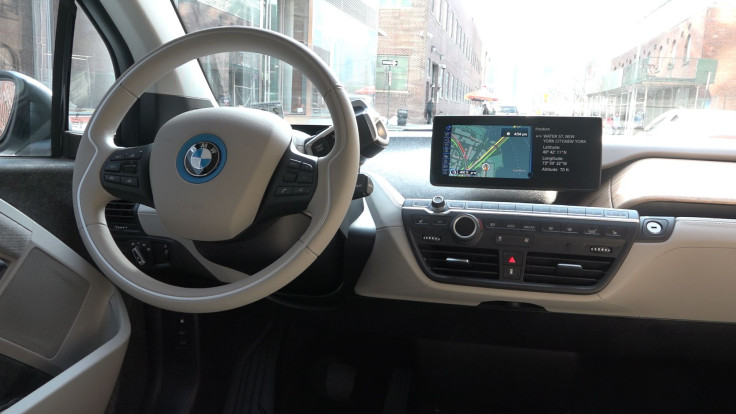
The i3 is certainly different on the outside, but the inside is a trip too.
When you first sit in the i3, it doesn’t really feel like you’re in a car. The seats don’t hug you with the familiarity you’ve come to expect out of modern leather and bucket seats, especially in this price bracket. Instead you slide laterally onto thin, flat seats more reminiscent of park benches than luxury vehicles.
You sit upright on a firm base and place your feet on a completely flat floor, not unlike the position you’re forced into when flying coach. Even if you recline the seat, it does little to mitigate the burden placed on your lower back. There’s no separate lumbar adjustment on the seats, either.
BMW’s flat floorboard gives the front occupants plenty of space to stretch out, but those in back will have no such luck. There’s almost no way you’ll be able to fit four full-sized adults in the BMW i3 -- and that’s assuming you could even convince them to sit back there in the first place. Even those around average height (5’6-5’8) will feel claustrophobic, trapped behind all but the shortest front passengers. At least the front feels like an exit row in coach -- the rear feels like the last row before the bathrooms.

The rear suicide doors don’t make things much easier, either. In theory, having suicide doors makes getting in and out of the back seats easier, but the i3 is small, and its rear doors will not open if the front doors aren’t opened first. Say you’re dropping friends or your children off somewhere -- you’ll still need to open your door, get out of your seat, and open their door so they can get out.
It sounds like such an unpleasant place to be.
And yet, it isn’t. Where the i3 fails in comfort and support, it excels in atmosphere and aesthetic design. Seats aside, the i3 has an open, inviting cabin; the high ceilings create a voluminous, airy feeling that you don’t get in most vehicles this size. You can have eucalyptus on the dash. Add to that the well-paddled, widened portion of the door to hang your arm on, and the i3 becomes a late-night city cruiser.
The materials used inside the i3 are fantastic. Most features in the i3’s interior are reclaimed or recycled in some way, but they never feel cheap.
Toys/Electronics

Aside from the electric powertrain (if you really want to count that as a toy), the i3 is surprisingly simple. Even in our test car, a mid-level “Giga World” trim, doesn’t have any technological features that make it stand out from any other BMW. It has iDrive, and the technology package gives you a rear-view camera with forward and rear collision warning. You don’t get lane departure warnings or cameras, which is the sort of thing Honda is equipping the Civic with as standard these days.
There’s an energy consumption/recharging meter on the dash to track your progress, but that’s about it.
Powertrain
This is the big one: What’s the i3 like on the road?
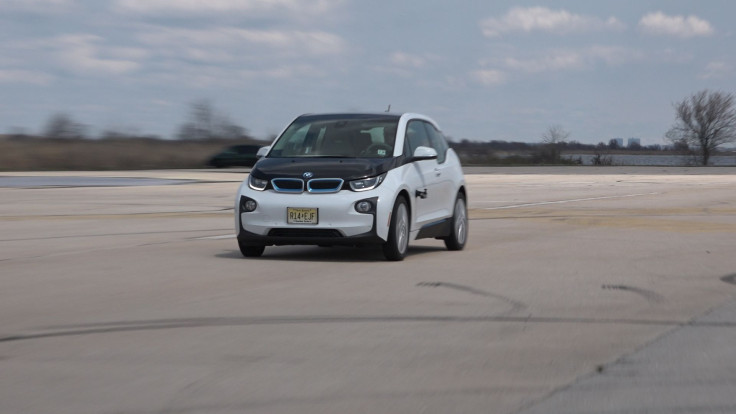
Well, it’s good, really.
Once you get past the absence of engine and drivetrain noise (and how spooky that can be for those unacquainted with electric vehicles), you’ll find that the i3 has a wealth of power whenever and wherever you demand it; as with all electric powerplants, the i3’s batteries provide instant torque. Combine that with the rather low curb weight (as far as electric vehicles go) and the i3 is no slouch. Zero to 60 takes about seven seconds -- that’s not going to set any records, but it will keep you alongside a Fiesta ST long enough to make them sweat.
It’s not the sprint to 60 mph that really matters -- how often do you need that in the real world, anyway? -- it’s the way the i3 goes from 20 to 40 mph. The i3 has enough power at its disposal to carve up city traffic at any time, and with its diminutive size, it can fit almost anywhere.
But power is nothing without control, or in this case good brakes. The i3 has a regenerative braking system much like other electric and electric hybrid cars. But BMW’s system is aggressive: Once you let off the throttle, the brakes bite hard, whether or not you actually touch the brake pedal. As the car slows down, the brakes capture some kinetic energy and use it to recharge the batteries. It’s eerie, but only at first -- once you get used to it, it becomes a game to see how long you can wait to actually step on the brakes. It’s quite fun, actually. In a juvenile sort of way.
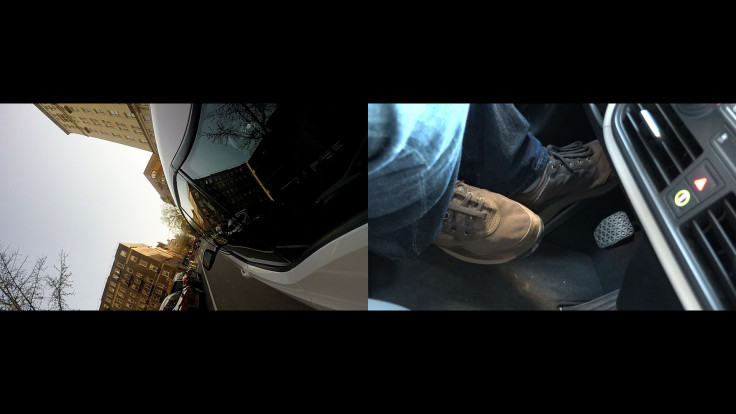
As a bonus, the captured energy can extend the i3’s electric range, giving you a few more miles before the car flatlines. Which is helpful, because the i3 doesn’t have a particularly large electric range; on battery power alone, BMW says the i3 will run for 80 miles on a single charge under the best circumstances. In the real world of annoyingly slow traffic, I killed the i3’s initial charge in 70 miles as I drove through the Holland Tunnel.
The potential range is most directly determined by the person behind the wheel, of course. But the i3 also has three modes to help influence your driving style: Comfort, which gives you all of the power and relaxes the regenerative braking; Eco Pro, which ramps up the braking and limits power in the name of efficiency; Eco Pro Plus, which has aggressive braking and limits top speed to 56 mph.
Eco Pro Plus is infuriating if you’re anywhere but gridlock, but it’ll eke out every last mile possible. Eco Pro is livable (and has a customizable top speed, though the default is 70 mph), but Comfort is what you really want.

Our test car was equipped with the “range extender,” a 647cc engine that kicks on when the batteries’ natural charge has run out. In the best of instances, it can increase the i3’s range by 60 miles. I’m not sure it’s entirely worth the premium you pay for it, as it adds nearly 300 pounds to the i3’s curb weight and makes an ugly sound when running.
Combined, I managed 115 mpge, slightly off the advertised 117 mpge for the range extender model. Those numbers are inherently confusing, but the short version is this: It cost 3.6 cents per mile to travel in the i3. In contrast, it currently costs me 10 cents per mile to power my personal car, assuming a gas price of $2.60 per gallon.
Though it’s expensive to buy, the i3 is cheaper to run than any traditional car out there.
Handling
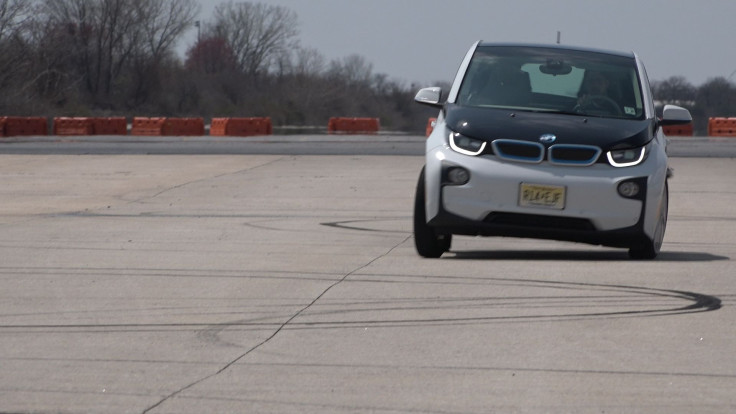
It’s a BMW, so you might expect the i3 to be a fun car to throw around corners. That’s a fair assumption, but also an incorrect one.
The i3 is tall, soft, and has some of the skinniest tires known to man since the automobile was invented. It wallows through corners and flounders if you ask it to change directions quickly. It’s certainly not an ideal experience, but despite all that, it’s never hard to place what the i3 is doing. The steering, though electric (obviously), is accurate and has gives good feedback through the steering wheel.
When you set a suspension for comfort and smoothness, you’re going to sacrifice agility and sharpness. In the i3, that’s okay, because it’s doubtful that anyone who buys it will really drive it hard. It’s not going to goad you into driving like an idiot.
Experience
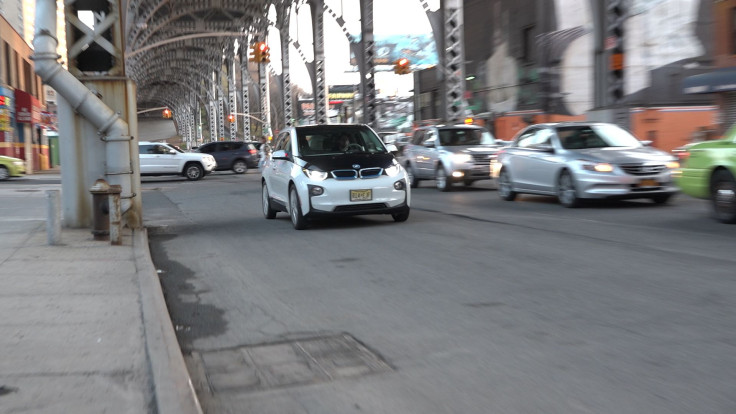
Let’s address the biggest issue the electric car currently faces: range anxiety. The fear that you’ll run out of power on the road. Knowing that you have a finite power source isn’t the problem -- the problem is that electric cars still take a long time to recharge, and that’s if you can even find a proper station.
A full charge at a BMW dealership took six hours and cost $13. Honestly, that’s far too long to be without your only car. Unless you have a station installed at your home (which BMW will do, for a fee, of course) electric cars can still require a heavy time commitment (Tesla Superchargers notwithstanding).
The one question every person asked (aside from “How much does it cost”) was: “Would you buy it over a Tesla?” The answer to that is difficult; the two cars are not direct competitors, they’re not anywhere near the same class, and a Tesla Model S is nearly twice the price of a base i3. They have different consumers in mind.
Conclusion
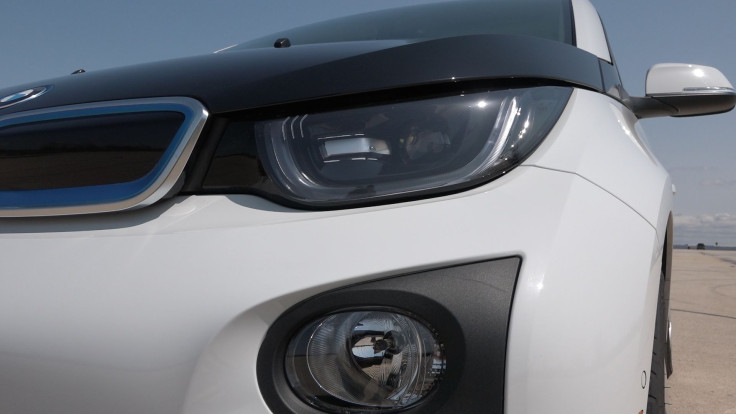
The i3 can't be your only vehicle, it's certainly not affordable, and it’s not as fun as traditional compacts, but it looks like nothing else on the road. And it’s hard to put a price on that.
SPECIFICATIONS
Battery: synchronous AC, 170 hp, 184 lb-ft; 22-kWh lithium-ion battery pack
Generator: DOHC 8-valve 647-cc inline-2, 34 hp
Transmission: 1-speed direct drive
Dimensions: Wheelbase 101.2 in Length 157.8 in Width 69.9 in Height 62.1 in Curb Weight 3135 lb
Price As Tested: $52,550 (base price w/range extender: $46,150, base price EV only: $41,350)
© Copyright IBTimes 2024. All rights reserved.





















